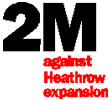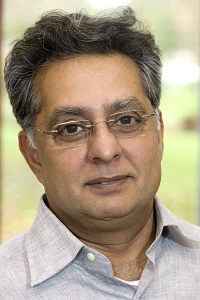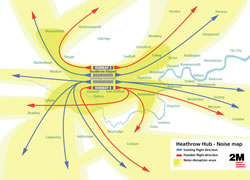2M Calls For Davies To Test Airport Claims
Scientific facts must back proposals for extra runway capacity

The all-party 2M Group of local authorities has warned that new proposals for extra runway capacity will fall at the first hurdle if they are not backed by scientific fact.
The campaign alliance, which includes boroughs affected by aircraft noise, has submitted its first report to Sir Howard Davies Aviation Commission which spells out how Heathrow’s previous bid for a third runway was based on wholly inadequate environmental assessments.
A High Court judge subsequently ruled against the scheme.
The councils say the only way for the Commission to succeed is for each proposal to be publicly scrutinised against credible, consistent benchmarks.
The group insists this process must be completely transparent if affected communities are to have any trust or confidence in the commission’s recommendations.
 Leader of Wandsworth Council and 2M spokesman Ravi Govindia said:
Leader of Wandsworth Council and 2M spokesman Ravi Govindia said:
“The overriding task for the Commission must be to win the confidence of those who will pay the price for any expansion – wherever it is located. It is for these reasons we urge Sir Howard to publish the assessment methodology so this can be opened for public debate.
“Previous Heathrow schemes have fallen by the wayside because the promoters failed to spell out the true environmental, financial and human costs. Without this discipline there can be no confidence that the business case has been properly evaluated and the environmental impacts for local communities fully articulated.”
In 2010 Lord Justice Carnwath's ruled a third runway ‘untenable’ and 2M says the airport is subject to the same constraints today:
• The area around Heathrow currently exceeds EU pollution limits due to aviation emissions and congestion on surrounding roads
• The additional rail infrastructure required to support additional runway capacity has not been identified
• A credible, contemporary measure for the onset of community annoyance from noise has not been established
The councils asserts that a robust assessment of Heathrow’s noise, transport and air quality impacts will rule out new runways, rule out more intensive use of existing runways and highlight the need to phase out early morning flights.
The 2M Group is an all-party alliance of local authorities concerned about the environmental impact of Heathrow operations on their communities. Members are not anti-Heathrow but work together to improve the environment and protect the quality of life for local people.
The group, which took its name from the 2 million residents of the original 12 authorities, now represents a combined population of 5 million people and was successful in 2010 in overturning plans for a third runway at the airport.
The group’s priority at this stage of the review process is to make the Commission fully aware of the environmental impacts that flow from any set of proposals submitted for the Heathrow site.
 |
 |
The group recently publish research highlighting the new areas of London which could be affected by flightpath noise if two new runways are built on the site. Images of the potential arrivals (shown above left ) and departures (shown above right) maps can be downloaded from Wandsworth council's website.
2M also warns that more runway capacity will not guarantee better connections between London and emerging markets. In practice the airlines will use extra runway slots to fly to the most profitable routes, not untested new services to cities in China.
For example, when BA bought up BMI's runway slots they used their increased capacity to fly more services to Alicante.
May 17, 2013
